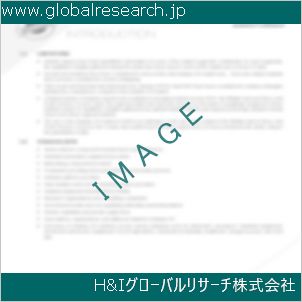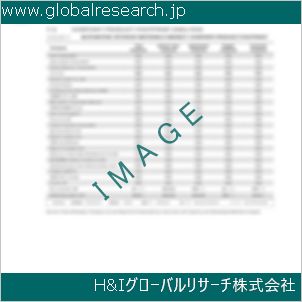1 Blood Clotting Aids Market Overview
1.1 Product Overview and Scope of Blood Clotting Aids
1.2 Blood Clotting Aids Segment by Type
1.2.1 Global Blood Clotting Aids Market Value Comparison by Type (2023-2029)
1.2.2 Spray
1.2.3 Powder
1.3 Blood Clotting Aids Segment by Application
1.3.1 Global Blood Clotting Aids Market Value by Application: (2023-2029)
1.3.2 Hospital
1.3.3 Clinic
1.3.4 Home
1.3.5 Others
1.4 Global Blood Clotting Aids Market Size Estimates and Forecasts
1.4.1 Global Blood Clotting Aids Revenue 2018-2029
1.4.2 Global Blood Clotting Aids Sales 2018-2029
1.4.3 Global Blood Clotting Aids Market Average Price (2018-2029)
1.5 Assumptions and Limitations
2 Blood Clotting Aids Market Competition by Manufacturers
2.1 Global Blood Clotting Aids Sales Market Share by Manufacturers (2018-2023)
2.2 Global Blood Clotting Aids Revenue Market Share by Manufacturers (2018-2023)
2.3 Global Blood Clotting Aids Average Price by Manufacturers (2018-2023)
2.4 Global Blood Clotting Aids Industry Ranking 2021 VS 2022 VS 2023
2.5 Global Key Manufacturers of Blood Clotting Aids, Manufacturing Sites & Headquarters
2.6 Global Key Manufacturers of Blood Clotting Aids, Product Type & Application
2.7 Blood Clotting Aids Market Competitive Situation and Trends
2.7.1 Blood Clotting Aids Market Concentration Rate
2.7.2 The Global Top 5 and Top 10 Largest Blood Clotting Aids Players Market Share by Revenue
2.7.3 Global Blood Clotting Aids Market Share by Company Type (Tier 1, Tier 2 and Tier 3)
2.8 Manufacturers Mergers & Acquisitions, Expansion Plans
3 Blood Clotting Aids Retrospective Market Scenario by Region
3.1 Global Blood Clotting Aids Market Size by Region: 2018 Versus 2022 Versus 2029
3.2 Global Blood Clotting Aids Global Blood Clotting Aids Sales by Region: 2018-2029
3.2.1 Global Blood Clotting Aids Sales by Region: 2018-2023
3.2.2 Global Blood Clotting Aids Sales by Region: 2024-2029
3.3 Global Blood Clotting Aids Global Blood Clotting Aids Revenue by Region: 2018-2029
3.3.1 Global Blood Clotting Aids Revenue by Region: 2018-2023
3.3.2 Global Blood Clotting Aids Revenue by Region: 2024-2029
3.4 North America Blood Clotting Aids Market Facts & Figures by Country
3.4.1 North America Blood Clotting Aids Market Size by Country: 2018 VS 2022 VS 2029
3.4.2 North America Blood Clotting Aids Sales by Country (2018-2029)
3.4.3 North America Blood Clotting Aids Revenue by Country (2018-2029)
3.4.4 United States
3.4.5 Canada
3.5 Europe Blood Clotting Aids Market Facts & Figures by Country
3.5.1 Europe Blood Clotting Aids Market Size by Country: 2018 VS 2022 VS 2029
3.5.2 Europe Blood Clotting Aids Sales by Country (2018-2029)
3.5.3 Europe Blood Clotting Aids Revenue by Country (2018-2029)
3.5.4 Germany
3.5.5 France
3.5.6 U.K.
3.5.7 Italy
3.5.8 Russia
3.6 Asia Pacific Blood Clotting Aids Market Facts & Figures by Country
3.6.1 Asia Pacific Blood Clotting Aids Market Size by Country: 2018 VS 2022 VS 2029
3.6.2 Asia Pacific Blood Clotting Aids Sales by Country (2018-2029)
3.6.3 Asia Pacific Blood Clotting Aids Revenue by Country (2018-2029)
3.6.4 China
3.6.5 Japan
3.6.6 South Korea
3.6.7 India
3.6.8 Australia
3.6.9 China Taiwan
3.6.10 Indonesia
3.6.11 Thailand
3.6.12 Malaysia
3.7 Latin America Blood Clotting Aids Market Facts & Figures by Country
3.7.1 Latin America Blood Clotting Aids Market Size by Country: 2018 VS 2022 VS 2029
3.7.2 Latin America Blood Clotting Aids Sales by Country (2018-2029)
3.7.3 Latin America Blood Clotting Aids Revenue by Country (2018-2029)
3.7.4 Mexico
3.7.5 Brazil
3.7.6 Argentina
3.8 Middle East and Africa Blood Clotting Aids Market Facts & Figures by Country
3.8.1 Middle East and Africa Blood Clotting Aids Market Size by Country: 2018 VS 2022 VS 2029
3.8.2 Middle East and Africa Blood Clotting Aids Sales by Country (2018-2029)
3.8.3 Middle East and Africa Blood Clotting Aids Revenue by Country (2018-2029)
3.8.4 Turkey
3.8.5 Saudi Arabia
3.8.6 UAE
4 Segment by Type
4.1 Global Blood Clotting Aids Sales by Type (2018-2029)
4.1.1 Global Blood Clotting Aids Sales by Type (2018-2023)
4.1.2 Global Blood Clotting Aids Sales by Type (2024-2029)
4.1.3 Global Blood Clotting Aids Sales Market Share by Type (2018-2029)
4.2 Global Blood Clotting Aids Revenue by Type (2018-2029)
4.2.1 Global Blood Clotting Aids Revenue by Type (2018-2023)
4.2.2 Global Blood Clotting Aids Revenue by Type (2024-2029)
4.2.3 Global Blood Clotting Aids Revenue Market Share by Type (2018-2029)
4.3 Global Blood Clotting Aids Price by Type (2018-2029)
5 Segment by Application
5.1 Global Blood Clotting Aids Sales by Application (2018-2029)
5.1.1 Global Blood Clotting Aids Sales by Application (2018-2023)
5.1.2 Global Blood Clotting Aids Sales by Application (2024-2029)
5.1.3 Global Blood Clotting Aids Sales Market Share by Application (2018-2029)
5.2 Global Blood Clotting Aids Revenue by Application (2018-2029)
5.2.1 Global Blood Clotting Aids Revenue by Application (2018-2023)
5.2.2 Global Blood Clotting Aids Revenue by Application (2024-2029)
5.2.3 Global Blood Clotting Aids Revenue Market Share by Application (2018-2029)
5.3 Global Blood Clotting Aids Price by Application (2018-2029)
6 Key Companies Profiled
6.1 Merck
6.1.1 Merck Corporation Information
6.1.2 Merck Description and Business Overview
6.1.3 Merck Blood Clotting Aids Sales, Revenue and Gross Margin (2018-2023)
6.1.4 Merck Blood Clotting Aids Product Portfolio
6.1.5 Merck Recent Developments/Updates
6.2 WoundSeal
6.2.1 WoundSeal Corporation Information
6.2.2 WoundSeal Description and Business Overview
6.2.3 WoundSeal Blood Clotting Aids Sales, Revenue and Gross Margin (2018-2023)
6.2.4 WoundSeal Blood Clotting Aids Product Portfolio
6.2.5 WoundSeal Recent Developments/Updates
6.3 Baxter
6.3.1 Baxter Corporation Information
6.3.2 Baxter Description and Business Overview
6.3.3 Baxter Blood Clotting Aids Sales, Revenue and Gross Margin (2018-2023)
6.3.4 Baxter Blood Clotting Aids Product Portfolio
6.3.5 Baxter Recent Developments/Updates
6.4 CSL
6.4.1 CSL Corporation Information
6.4.2 CSL Description and Business Overview
6.4.3 CSL Blood Clotting Aids Sales, Revenue and Gross Margin (2018-2023)
6.4.4 CSL Blood Clotting Aids Product Portfolio
6.4.5 CSL Recent Developments/Updates
6.5 Acme United
6.5.1 Acme United Corporation Information
6.5.2 Acme United Description and Business Overview
6.5.3 Acme United Blood Clotting Aids Sales, Revenue and Gross Margin (2018-2023)
6.5.4 Acme United Blood Clotting Aids Product Portfolio
6.5.5 Acme United Recent Developments/Updates
6.6 Medi-First
6.6.1 Medi-First Corporation Information
6.6.2 Medi-First Description and Business Overview
6.6.3 Medi-First Blood Clotting Aids Sales, Revenue and Gross Margin (2018-2023)
6.6.4 Medi-First Blood Clotting Aids Product Portfolio
6.6.5 Medi-First Recent Developments/Updates
6.7 Grifols
6.6.1 Grifols Corporation Information
6.6.2 Grifols Description and Business Overview
6.6.3 Grifols Blood Clotting Aids Sales, Revenue and Gross Margin (2018-2023)
6.4.4 Grifols Blood Clotting Aids Product Portfolio
6.7.5 Grifols Recent Developments/Updates
6.8 Kedrion
6.8.1 Kedrion Corporation Information
6.8.2 Kedrion Description and Business Overview
6.8.3 Kedrion Blood Clotting Aids Sales, Revenue and Gross Margin (2018-2023)
6.8.4 Kedrion Blood Clotting Aids Product Portfolio
6.8.5 Kedrion Recent Developments/Updates
6.9 Cramer
6.9.1 Cramer Corporation Information
6.9.2 Cramer Description and Business Overview
6.9.3 Cramer Blood Clotting Aids Sales, Revenue and Gross Margin (2018-2023)
6.9.4 Cramer Blood Clotting Aids Product Portfolio
6.9.5 Cramer Recent Developments/Updates
6.10 Celox
6.10.1 Celox Corporation Information
6.10.2 Celox Description and Business Overview
6.10.3 Celox Blood Clotting Aids Sales, Revenue and Gross Margin (2018-2023)
6.10.4 Celox Blood Clotting Aids Product Portfolio
6.10.5 Celox Recent Developments/Updates
6.11 First Aid Only
6.11.1 First Aid Only Corporation Information
6.11.2 First Aid Only Blood Clotting Aids Description and Business Overview
6.11.3 First Aid Only Blood Clotting Aids Sales, Revenue and Gross Margin (2018-2023)
6.11.4 First Aid Only Blood Clotting Aids Product Portfolio
6.11.5 First Aid Only Recent Developments/Updates
7 Industry Chain and Sales Channels Analysis
7.1 Blood Clotting Aids Industry Chain Analysis
7.2 Blood Clotting Aids Key Raw Materials
7.2.1 Key Raw Materials
7.2.2 Raw Materials Key Suppliers
7.3 Blood Clotting Aids Production Mode & Process
7.4 Blood Clotting Aids Sales and Marketing
7.4.1 Blood Clotting Aids Sales Channels
7.4.2 Blood Clotting Aids Distributors
7.5 Blood Clotting Aids Customers
8 Blood Clotting Aids Market Dynamics
8.1 Blood Clotting Aids Industry Trends
8.2 Blood Clotting Aids Market Drivers
8.3 Blood Clotting Aids Market Challenges
8.4 Blood Clotting Aids Market Restraints
9 Research Finding and Conclusion
10 Methodology and Data Source
10.1 Methodology/Research Approach
10.1.1 Research Programs/Design
10.1.2 Market Size Estimation
10.1.3 Market Breakdown and Data Triangulation
10.2 Data Source
10.2.1 Secondary Sources
10.2.2 Primary Sources
10.3 Author List
10.4 Disclaimer
| ※参考情報 血液凝固補助剤は、止血や血液凝固を促進するために使用される医療用物質であり、様々な状況での出血管理において重要な役割を果たします。ここでは、血液凝固補助剤の定義、特徴、種類、用途、関連技術について詳しく述べていきます。 血液凝固補助剤の定義は、出血を制御し、血液の正常な凝固機能を助けるために使用される物質の一群を指します。これらの補助剤は、自然な凝固過程を強化したり、凝固因子を補充したりすることにより、血液が迅速かつ効果的に凝固するのを助けます。特に手術や外傷、病的な出血傾向がある患者において、その使用は不可欠とされています。 血液凝固補助剤の特徴としては、主に以下の点が挙げられます。まず、迅速な効果が求められる点です。出血が発生している状況では、時間が重要であり、いかに早く止血できるかがカギとなります。次に、施薬の簡便さが挙げられます。医療現場においては、限られた時間の中で迅速に対応する必要があるため、使用方法が簡単であることが求められます。さらに、出血の原因や状況によって異なる種類の補助剤が必要となるため、多様性が重要です。 血液凝固補助剤にはいくつかの種類が存在します。代表的なものとしては、凝固因子製剤、トロンビン製剤、止血剤、そしてフィブリン接着剤などが挙げられます。凝固因子製剤は、血友病などの血液凝固障害のある患者に対して使用され、特定の凝固因子を補充します。トロンビン製剤は、トロンビンという酵素を含み、血液凝固を促進します。止血剤は、損傷した血管の周囲に作用し、血小板の集積を助けることで止血を促進します。フィブリン接着剤は、自然のフィブリンを利用し、傷口を閉じるために使用されます。このように、補助剤の種類によってその作用機序や用途は異なります。 血液凝固補助剤の用途は非常に広範囲にわたります。外科手術においては、出血を最小限に抑えるためにこれらの補助剤が用いられます。特に内科手術や心臓手術、整形外科手術などでその重要性は高まります。また、外傷による急性出血や、血栓症などの病的状態に対しても血液凝固補助剤は用いられます。加えて、救急医療の現場においても重篤な出血を管理するために不可欠です。 関連技術としては、凝固因子の製造技術や、補助剤の投与方法、モニタリング技術などが挙げられます。特に、バイオテクノロジーの進展により、遺伝子組換え技術を用いた凝固因子製剤の開発が進んでいます。これにより、より高純度で安全な製剤が市場に出回り、患者の安全性が向上しています。さらに、血液凝固の状態をリアルタイムでモニタリングするための装置や技術も開発されており、これにより適切なタイミングでの介入が可能になっています。 このように、血液凝固補助剤は医療現場で非常に重要な役割を果たしており、その多様な種類と用途は幅広い分野での出血管理に寄与しています。今後も技術の進歩に伴い、さらなる安全性と効果が求められる中で、血液凝固補助剤の研究と開発は続けられることでしょう。この分野は日々進化し、患者のQOL(生活の質)の向上に貢献しています。 |
❖ 免責事項 ❖
http://www.globalresearch.jp/disclaimer












